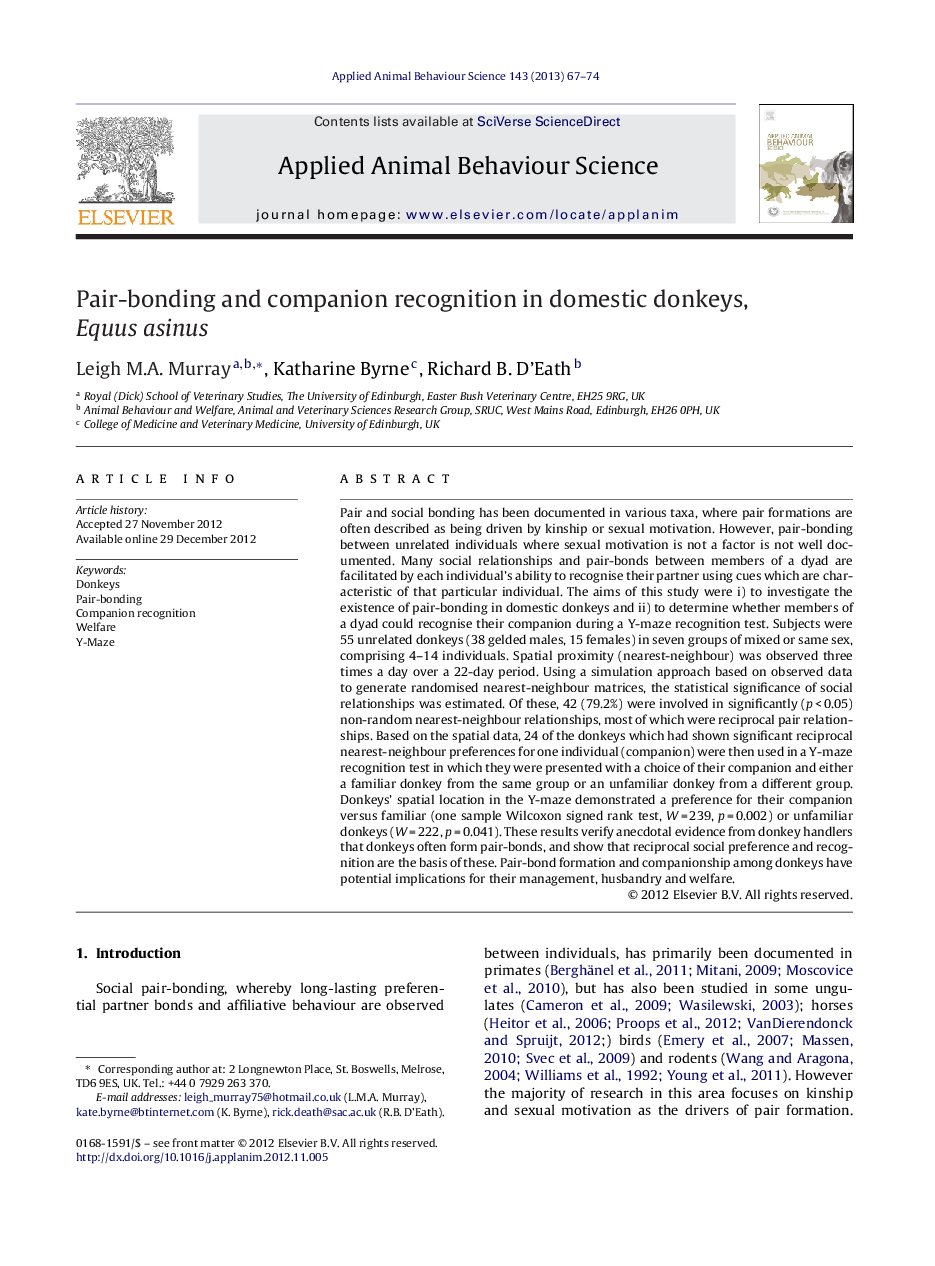| کد مقاله | کد نشریه | سال انتشار | مقاله انگلیسی | نسخه تمام متن |
|---|---|---|---|---|
| 4522858 | 1323228 | 2013 | 8 صفحه PDF | دانلود رایگان |

Pair and social bonding has been documented in various taxa, where pair formations are often described as being driven by kinship or sexual motivation. However, pair-bonding between unrelated individuals where sexual motivation is not a factor is not well documented. Many social relationships and pair-bonds between members of a dyad are facilitated by each individual's ability to recognise their partner using cues which are characteristic of that particular individual. The aims of this study were i) to investigate the existence of pair-bonding in domestic donkeys and ii) to determine whether members of a dyad could recognise their companion during a Y-maze recognition test. Subjects were 55 unrelated donkeys (38 gelded males, 15 females) in seven groups of mixed or same sex, comprising 4–14 individuals. Spatial proximity (nearest-neighbour) was observed three times a day over a 22-day period. Using a simulation approach based on observed data to generate randomised nearest-neighbour matrices, the statistical significance of social relationships was estimated. Of these, 42 (79.2%) were involved in significantly (p < 0.05) non-random nearest-neighbour relationships, most of which were reciprocal pair relationships. Based on the spatial data, 24 of the donkeys which had shown significant reciprocal nearest-neighbour preferences for one individual (companion) were then used in a Y-maze recognition test in which they were presented with a choice of their companion and either a familiar donkey from the same group or an unfamiliar donkey from a different group. Donkeys’ spatial location in the Y-maze demonstrated a preference for their companion versus familiar (one sample Wilcoxon signed rank test, W = 239, p = 0.002) or unfamiliar donkeys (W = 222, p = 0.041). These results verify anecdotal evidence from donkey handlers that donkeys often form pair-bonds, and show that reciprocal social preference and recognition are the basis of these. Pair-bond formation and companionship among donkeys have potential implications for their management, husbandry and welfare.
Journal: Applied Animal Behaviour Science - Volume 143, Issue 1, 15 January 2013, Pages 67–74